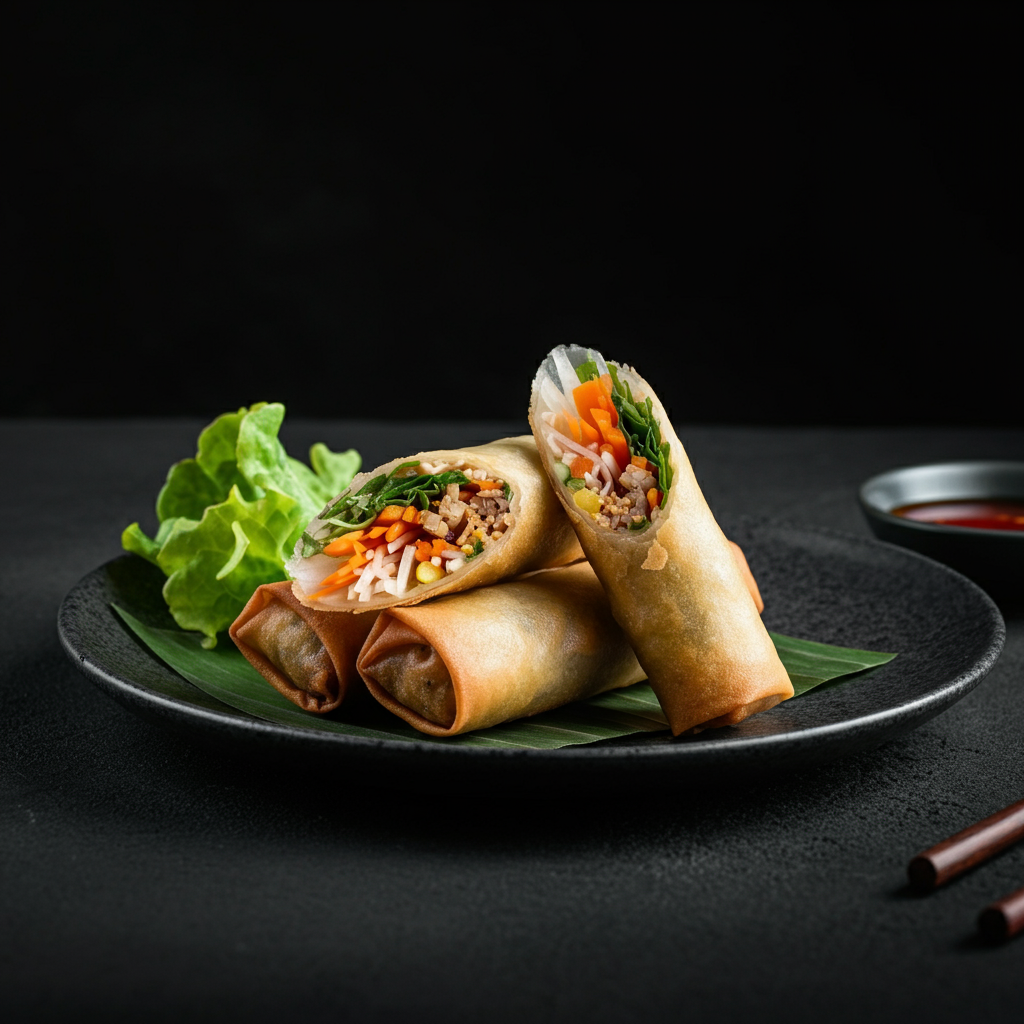Lumpia
Indonesia
Spring rolls, either fresh or fried, often filled with vegetables and meat.

Origins and History
Lumpia's origins are deeply intertwined with the history of Indonesian trade and cultural exchange. While the precise origins are debated, the dish's arrival in Indonesia is widely believed to be linked to the influence of Chinese immigrants, particularly during the period of significant Chinese migration to the archipelago. The spring roll tradition, with its variations in fillings and preparation methods, adapted and evolved within the Indonesian culinary landscape, resulting in the unique regional variations we see today. The name itself is believed to be derived from the Hokkien word for "spring roll". Over time, Lumpia has been embraced as a truly Indonesian dish, integrating seamlessly into the diverse culinary fabric of the nation.
Cultural Significance
Lumpia holds a significant place in Indonesian culture, frequently appearing at celebrations, festive occasions, and family gatherings. It's a common sight at weddings, birthdays, religious holidays, and even casual get-togethers. Its versatility makes it suitable for various settings, from formal banquets to street food stalls. The act of sharing Lumpia underscores the communal aspect of Indonesian cuisine, fostering a sense of togetherness and shared experience. The presence of Lumpia often signifies abundance and prosperity, enhancing the celebratory atmosphere of many gatherings.
Traditional Preparation
Traditional Lumpia preparation begins with the careful preparation of the filling. This usually involves finely chopping vegetables like cabbage, carrots, and bean sprouts, often combined with minced meat (chicken, pork, or shrimp) seasoned with savory spices like garlic, shallots, and pepper. The wrapper, a thin crepe-like sheet, is typically made from wheat flour. The filling is meticulously placed in the center of the wrapper, which is then expertly rolled and sealed. The Lumpia is then either deep-fried until golden brown and crispy, or left fresh and served immediately, depending on the preference and regional style.
Regional Variations
Indonesia's diverse regional cuisines have led to fascinating variations in Lumpia. For example, Lumpia Semarang, from Central Java, is known for its larger size and distinctive sweet and savory filling. In contrast, Lumpia basah (wet Lumpia) from Pemalang, also in Central Java, is served with a rich peanut sauce. Other regions feature unique variations in fillings, sauces, and wrapper textures, reflecting the local culinary traditions and available ingredients. These regional differences highlight the adaptability and enduring popularity of this classic Indonesian dish.
Modern Interpretations
While respecting its traditional roots, Lumpia has also embraced modern interpretations. Chefs and food enthusiasts continue to experiment with new fillings, creating innovative flavor combinations. Vegetarian and vegan options are increasingly popular, using ingredients like tofu, mushrooms, and various vegetables. Fusion approaches incorporate international culinary influences, adding exciting twists to the classic Lumpia. This continuous evolution ensures that Lumpia remains a dynamic and relevant dish within Indonesian and global cuisines.